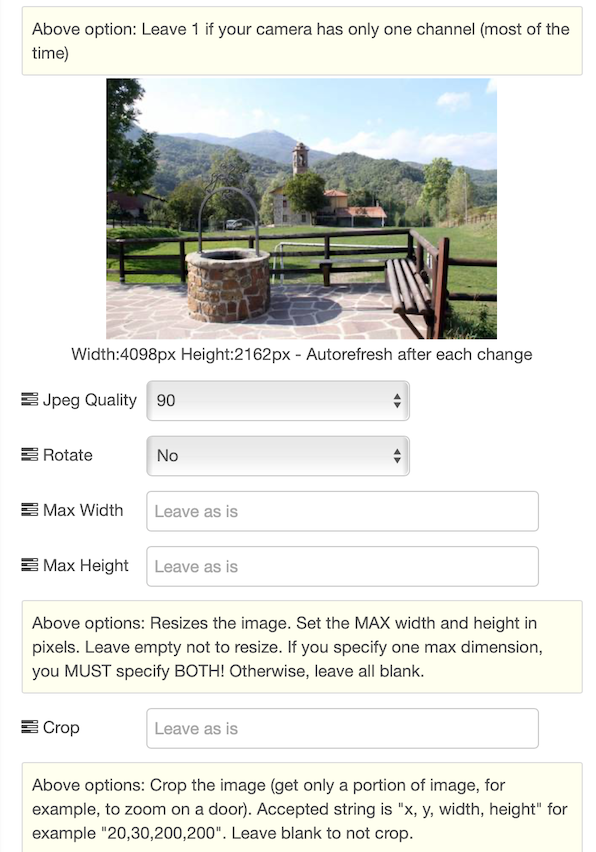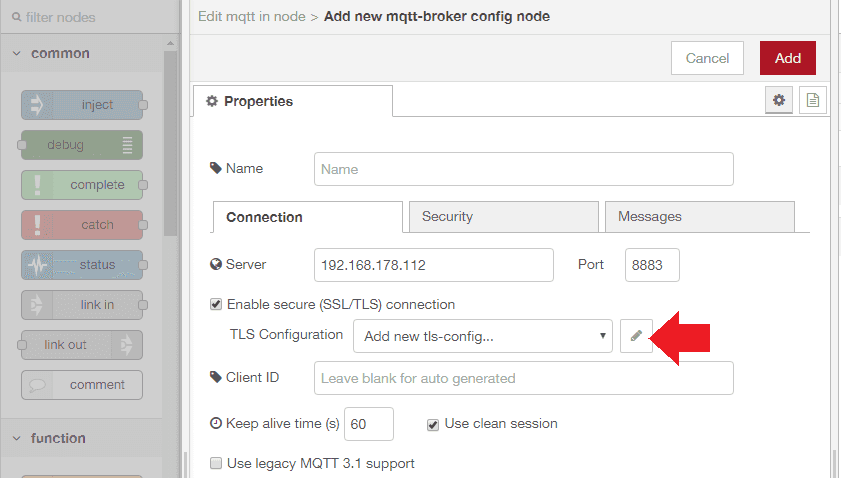
Node red alarm install#
If you want to install Node-RED in Synology, you can read this topic on Node-RED in HA community.Īlso, do not forget to install the iframe in Home Assistant for easier access. Compared to Frenck’s add-on, you will not have ingress but also need to install the nodes (see our recommendation below) and configure the Node-RED basics.
Node red alarm how to#
See the official instructions on how to install Node-RED using Dockerįor Node-RED in docker-compose you can use the following: nodered: You can do it using docker cli, or (in my opinion prefered option) using docker-compose. If you are running Home Assistant (like I do in my Home Assistant docker-compose with traefik), you still can install Node-RED in docker environment. Seriously, I do not see a single reason why somebody should use any other ways to install Node-RED if they are on Hass.ioĬommunity Page on Node-RED add-on | GitHub repository B.

Tracking down in the logbook is tricky because it doesn’t look like node red reports to the logbook. It is more difficult to debug – this is mainly to the limited log available (see our tips below how to change this).It is more difficult for Node-RED as it can share the credentials when you send it to other people and so on This is great to learn and re-use the ideas of other people. Difficult to share – I have a github repository with all my YAML automations and it is incredibly easy to share yours in the same way.Stability – Node-RED it is not part of Home Assistant which means it develops on its own there were some integrations issues.Another alternative is XML but it semantics means that it can be easily twisted, while JSON is simpler to interpret and read. We are going a bit technical here, but another benefit of Node-RED is that it uses JSON.Easy to change – you do not need to reboot Home Assistant or any component of it to make it work.

You can basically see how the data travels between your blocks and what each logic statement does for the automation. Architecture of interaction between Node-RED and Home Assistant Node-red vs YAML Cases where Node-RED excelled Home Assistant handles all the integrations, state management, and action engine, while Node-RED utilizes environment awareness to trigger rules and execute actions. This is where Node-RED strengths naturally compliment Home Assistant. In addition, although it is a very flexible language, creating complicated automation rules might be very difficult and error-prone. The main way it uses to create automation is YAML files and if you ask any beginner they will tell you that it is complicated and intimidating. Home Assistant’s main power is in the ability to interface with almost any smart device existing at the moment. This makes it easy to learn and especially great for applications that need more mass adoption. In FBP the applications are the collections processes, which linked using data Information Packets that travel between processes though defined connections.Ĭompared to the usual way of thinking about the coding, flow-based programming is much more visual and you can almost draw the code. The basic premise is to decompose the problem up into several components: data, processes, and the network. What is flow-based programming?įlow-Based Programming (FBP) is a slightly different approach to thinking about programming.

In 2016, IBM contributed Node-RED as an open source JS Foundation project. It was solving a problem of creating IoT eco-system that is connected and controlled in the real world. The idea behind it was to provide a convenient way to connect the hardware and devices to web-based services and software. It is all started in 2013 when IBM developed Node-RED project. What is Node-RED and why is it great for Home Assistant

Best home automations nodes for Node-RED.What is Node-RED and why is it great for Home Assistant.


 0 kommentar(er)
0 kommentar(er)
